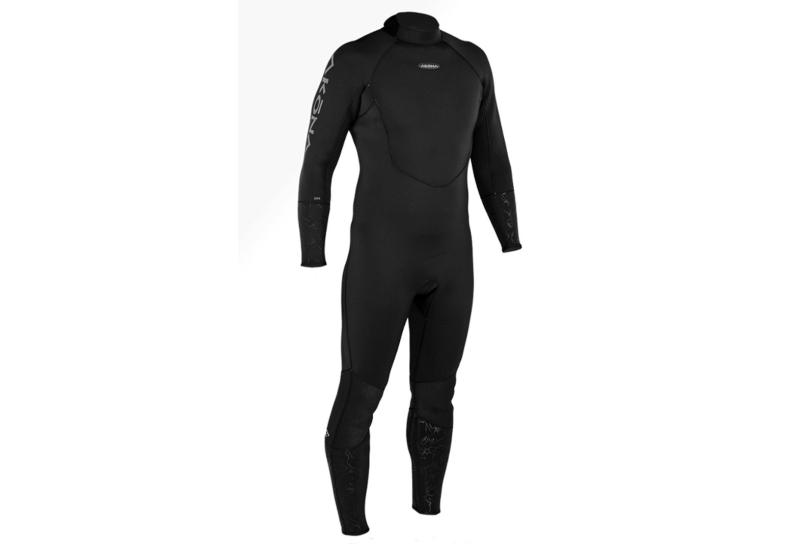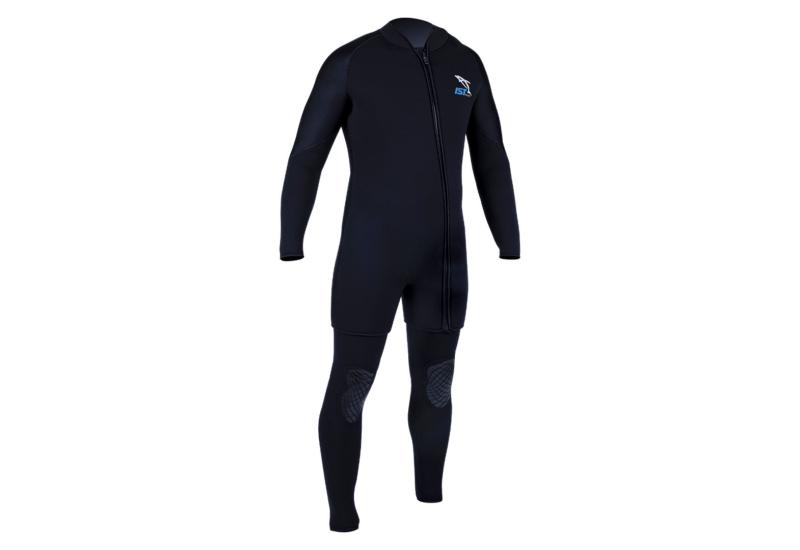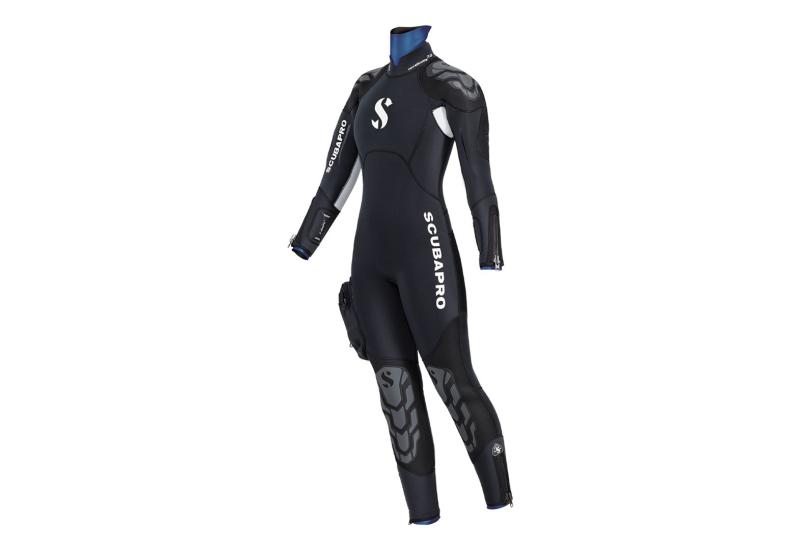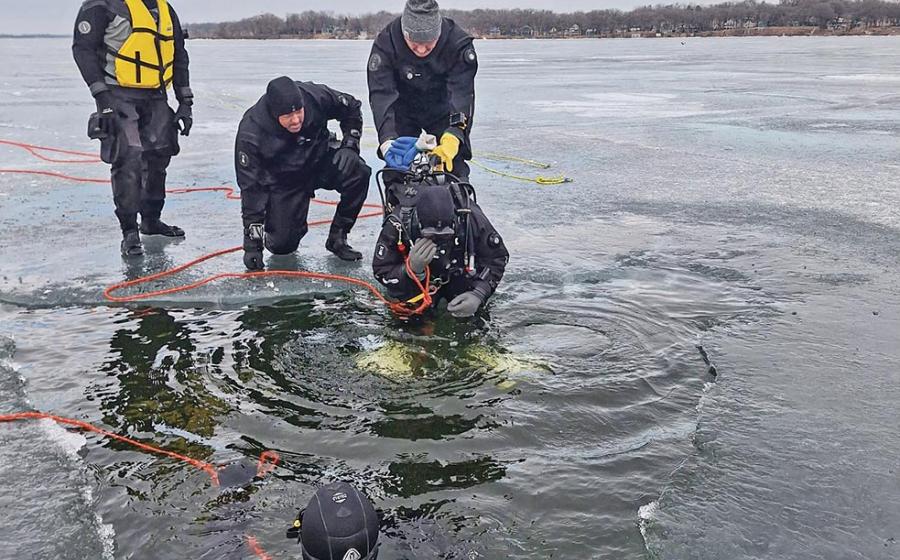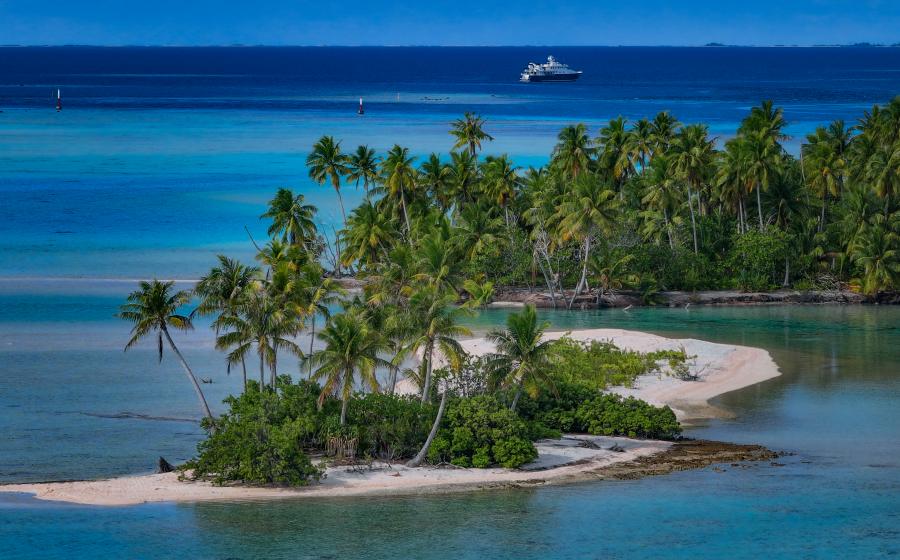Know Your Gear: Exposure Protection
What Style Should I Buy?
Opt for full coverage. Shorties have their uses, but if you leave your arms and legs unprotected, you need more rubber over your torso to make up for it. If you cover your entire body (including your head), you'll probably need less total neoprene and have to put less weight on your belt. A thinner full suit may well be able to provide as much warmth as a thicker shorty. Besides, you should give your arms and legs protection from sun and scrapes.
Full Suit or Farmer John/Jane?
The two-piece farmer john or jane used to be the standard wetsuit, but today many divers prefer the one-piece suit, called a full suit, jumpsuit or steamer. The biggest reason is versatility. The full suit can be combined with a vest or jacket to give two layers of insulation over the torso, like the two-piece, or it can be worn alone in warmer water for more flexibility and less buoyancy.
Two-piece suits still have one advantage, however. Divers with odd leg-to-torso proportions may get a better fit with a two-piece suit because they can mix and match the sizes. Some companies offer jumpsuit sizing with optional long or short legs to solve this problem, but most do not.
How Thick?
You can find charts (see chart at right) to tell you what thickness of neoprene is right for what temperature, but in fact individuals differ enormously in how quickly they lose heat. Thin people, older people and women tend to chill sooner, but generalizations are almost impossible to make, and apparently similar divers will differ widely. In fact, your body's insulation needs will differ from one day to the next depending on the state of your rest, nutrition and health.
Your wetsuit needs will also differ with the depth of the dive. In fact, depth may well be more important than water temperature in deciding how thick your wetsuit should be. That's because neoprene compresses with depth, and the thinner it is, the less insulation it can offer. Some neoprenes compress more than others, but typical neoprenes lose half their insulation value at 60 feet.
How Much Should You Spend?
The recent popularity of dry suits has put downward pressure on wetsuit prices and spurred their tech-nical improvement, proving again Dr. Johnson's dictum that the prospect of extinction "wonderfully concentrates the mind." While there are overpriced wetsuits, most of them--especially those from the companies that specialize in wetsuits--are competitively priced.
But that does not mean the $149 wetsuit is the bargain it looks. The corner that is cut most often is the quality of the neoprene. Inexpensive neoprene is often "cut" with non-functional fillers like clay. It may feel good in the store and may be warm for the first few dives, but it will probably compress quickly at depth and not be as warm. Even worse, it will probably crush permanently after only a few deep dives. Cheap neoprenes are often given their softness by incomplete curing, so the molecular links are not fully made. It's like a "half-cooked pancake," as a Rubatex engineer put it. The incomplete links break down under pressure, the gas bubbles collapse and the neoprene loses its insulation.
Wetsuit Buyer's Checklist
-
Look for a wetsuit that offers full body coverage.
-
Choose a style--one piece or two--that is appropriate for your needs.
-
Get the best fit possible so that your wetsuit minimizes the amount of water that enters the suit but doesn't constrict your circulation.
-
Check water entry points--wrists, ankles, neck, zippers--to ensure a tight seal.
-
Select a thickness based on the kind of diving you plan to do, but remember that if you're too warm, you can always open a zipper.
-
Buy additional pieces--vest, boots, gloves, hood--that will allow you to customize coverage according to diving conditions.
-
Examine the neoprene closely to determine its quality. Will it insulate well and keep insulating well?
What Style Should I Buy?
Opt for full coverage. Shorties have their uses, but if you leave your arms and legs unprotected, you need more rubber over your torso to make up for it. If you cover your entire body (including your head), you'll probably need less total neoprene and have to put less weight on your belt. A thinner full suit may well be able to provide as much warmth as a thicker shorty. Besides, you should give your arms and legs protection from sun and scrapes.
Full Suit or Farmer John/Jane?
The two-piece farmer john or jane used to be the standard wetsuit, but today many divers prefer the one-piece suit, called a full suit, jumpsuit or steamer. The biggest reason is versatility. The full suit can be combined with a vest or jacket to give two layers of insulation over the torso, like the two-piece, or it can be worn alone in warmer water for more flexibility and less buoyancy.
Two-piece suits still have one advantage, however. Divers with odd leg-to-torso proportions may get a better fit with a two-piece suit because they can mix and match the sizes. Some companies offer jumpsuit sizing with optional long or short legs to solve this problem, but most do not.
How Thick?
You can find charts (see chart at right) to tell you what thickness of neoprene is right for what temperature, but in fact individuals differ enormously in how quickly they lose heat. Thin people, older people and women tend to chill sooner, but generalizations are almost impossible to make, and apparently similar divers will differ widely. In fact, your body's insulation needs will differ from one day to the next depending on the state of your rest, nutrition and health.
Your wetsuit needs will also differ with the depth of the dive. In fact, depth may well be more important than water temperature in deciding how thick your wetsuit should be. That's because neoprene compresses with depth, and the thinner it is, the less insulation it can offer. Some neoprenes compress more than others, but typical neoprenes lose half their insulation value at 60 feet.
How Much Should You Spend?
The recent popularity of dry suits has put downward pressure on wetsuit prices and spurred their tech-nical improvement, proving again Dr. Johnson's dictum that the prospect of extinction "wonderfully concentrates the mind." While there are overpriced wetsuits, most of them--especially those from the companies that specialize in wetsuits--are competitively priced.
But that does not mean the $149 wetsuit is the bargain it looks. The corner that is cut most often is the quality of the neoprene. Inexpensive neoprene is often "cut" with non-functional fillers like clay. It may feel good in the store and may be warm for the first few dives, but it will probably compress quickly at depth and not be as warm. Even worse, it will probably crush permanently after only a few deep dives. Cheap neoprenes are often given their softness by incomplete curing, so the molecular links are not fully made. It's like a "half-cooked pancake," as a Rubatex engineer put it. The incomplete links break down under pressure, the gas bubbles collapse and the neoprene loses its insulation.
Wetsuit Buyer's Checklist
Look for a wetsuit that offers full body coverage.
Choose a style--one piece or two--that is appropriate for your needs.
Get the best fit possible so that your wetsuit minimizes the amount of water that enters the suit but doesn't constrict your circulation.
Check water entry points--wrists, ankles, neck, zippers--to ensure a tight seal.
Select a thickness based on the kind of diving you plan to do, but remember that if you're too warm, you can always open a zipper.
Buy additional pieces--vest, boots, gloves, hood--that will allow you to customize coverage according to diving conditions.
Examine the neoprene closely to determine its quality. Will it insulate well and keep insulating well?

